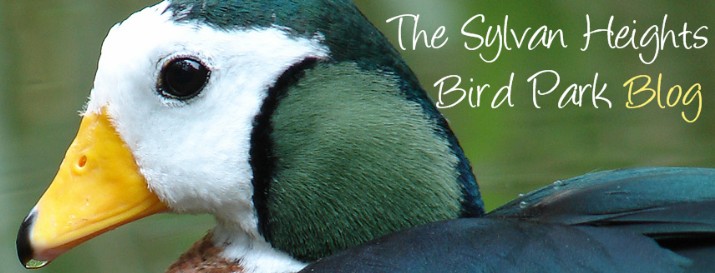
The largest native land bird on the islands, the Nene is the state bird of the Hawaii. Though it is most commonly known by its Polynesian name, the Nene is also sometimes called the Hawaiian Goose or the Lava Goose. It is the only waterfowl exclusively adapted for life on lava flows with longer, stronger legs and almost non-existent webbing on their toes to increase their agility. In fact, Nenes and Magpie Geese are the only two waterfowl with greatly reduced webbing on their feet to the point of being nearly non-web-footed. Thus, the Nenes are better suited for their life along the rough and uneven volcanic slopes.
Despite their close relation to the Canada goose, Nenes are distinct among the northern geese for their sedentary lifestyle. They are non-migratory and, in fact, are less inclined to fly than any other goose. Because their breeding season is not triggered by a lengthening photoperiod, their breeding season is very long (August to April) and they have the longest incubation period (29-30 days) of any goose. Even though goslings are quite large upon hatching, they are slow growers, and their mortality rate is the highest of all geese.
Although their highland habitat is can be quite humid with clouds and dew, water is often only available in small, temporary pools and so this goose is not a very adept swimmer. They prefer to browse shrub-like vegetation and their upright body structure allows them to reach quite high.
Physically, these birds appear quite alert and inquisitive. Their dark faces contrast with their buff colored necks that are deeply furrowed by the feathers on their neck, which gives it the appearance of dark, wavy stripes. Their softly spoken "ne" vocalizations, quickly capture visitors’ attention at the Park and they often race up to visitors, hoping for a hand-out of duck food, or some potatoes, which they occasionally receive as a treat from the Animal Staff.
This delightful goose was on the edge of extinction by 1949, with only 20 to 30 birds remaining in the wild and less than 20 in captivity. As with many endangered species, uncontrolled hunting pressure and the introduction of non-native predators quickly took its toll on the population. However, careful management and propagation of captive birds and release programs have greatly helped this species to survive.
Today, Nenes remain at risk, however, the future seems brighter thanks to the efforts of private breeders and their collaboration with waterfowl organizations and researchers.
*To learn more about this great bird, check out Frank Todd’s Natural History of Waterfowl, from which most of this information was pulled.
